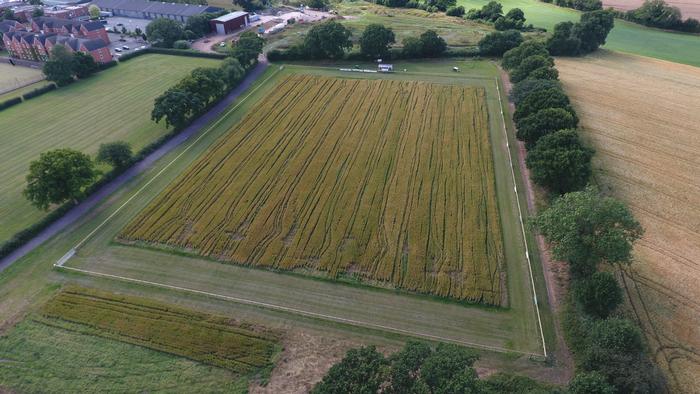
A project which aims to be the first in the world to plant, tend and harvest a crop with only autonomous vehicles is set to harvest spring barley during the next three weeks.
The Hands Free Hectare (HFHa) project at Harper Adams University is set to take on the world-first achievement.
Kit Franklin, agricultural engineering lecturer and the project’s lead, said: “The crop has done really well; it’s nearly matured and looking like it’s going to yield quite well.
“Obviously we do have the misses where the tractor wasn’t quite driving straight when we were drilling it but I think it’s going to yield reasonably well and harvest is fast approaching. Work has been very intensive to ensure the combine is ready in time.
“The combine is using very similar systems to the ones that we established on the tractor that we used for spraying, drilling and rolling our hectare. There’s a large number of actuators to move and control all of the systems on the combine which have had to be fitted.”
Challenges
The team believes there is now no technological barrier to automated field agriculture.
However, the project did come with challenges. Looking back on the hardships the project has thrown at them, Mr Franklin added: “After successfully drilling and rolling the crop, we had to try and turn round the tractor and reconfigure it into a sprayer very quickly to try and get a pre-emergence spray on.
“Sadly, we missed that target but we have since managed to get on our T1 and T2 fungicides, including a herbicide to help tackle some grass weeds we were seeing and micro-nutrients to aid the crop growth, so chemical coming from Bayer and the nutrients from Yara, which is great.”
Live streaming
Hutchinsons’s Kieran Walsh, the team’s agronomist, said: “As the crop was drilled late disease levels have been fairly low. For this project it’s worked rather well, maybe a little compromise in yield, but it’s allowed us to always be protecting the crop from disease.
“I’ve also received plant samples from the robot scout; it’s driven out over the field on set points and scooped up soil and plant samples. These are then brought back to mission control for us to examine.
“For me this has been one of the most challenging parts of the project, as I get a feel of what crops are doing when I walk through a field. With our hands-free crop I’ve studied the scout video footage very closely to determine the weed levels and disease on the crop.
“We’ve also used live streaming from mission control which has been very useful. This has enabled me to ask the team to pick certain plants and check specific areas for disease levels and crop growth stages.”
